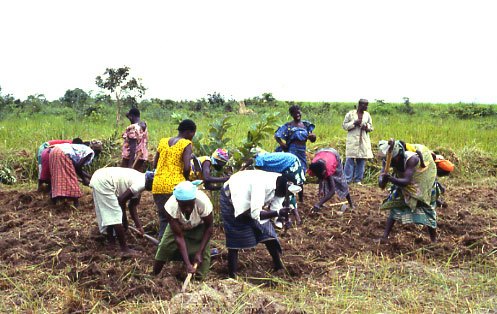 A 4-year study calls for urgent reforms to avert further desertification threatening 'poorest of the poor' worldwide
A 4-year study calls for urgent reforms to avert further desertification threatening 'poorest of the poor' worldwide
"Arid aquaculture" using ponds filled with salty, undrinkable water for fish production is one of several options experts have proven to be an effective potential alternative livelihood for people living in desertified parts of the world's expanding drylands, reports Eurekalert.
In a report researchers with the United Nations University, the International Centre on Agricultural Research in Dryland Areas (ICARDA), and UNESCO's Man and the Biosphere (MAB) Program say alternatives to traditional crop farming and livestock rearing will need to be put in place in drylands in order to mitigate human causes of desertification.
While it may sound far-fetched, researchers say using briny water to establish aquaculture in a dry, degraded part of Pakistan not only introduced a new source of income, it helped improve nutrition through diet diversification. The researchers also showed it possible to cultivate some varieties of vegetables with the same type of brackish water.
Drylands residents, many of whom are the world's "poorest of the poor," employ "highly vulnerable livelihood strategies that depend on land productivity" warns the report, which describes the success of several occupational options explored in a four-year, multi-country study.
Other promising alternative livelihoods, successfully tested in eight countries, include:
- The manufacture and marketing of "dryland soaps" derived from locally-produced olive oil and fragrances from sustainably cultivated aromatic dryland plants, including geranium, lavender, pomegranate and mint;
- Developing sustainable drylands ecotourism, which brings income while encouraging villagers to conserve natural ecosystems;
- Harnessing the abundant solar power capacity in sunny drylands to create sustainable livelihoods and new economic opportunities;
- Producing wool and sand-based handicrafts for sale at visitor destinations.
Because they do not primarily depend on land productivity, these and other options have the potential to reduce the pressure on the fragile resource base in marginal drylands, says the report. "At the same time, these strategies proved to yield significantly higher income per investment than traditional land-based livelihoods."
The report, "People in Marginal Drylands: Managing Natural Resources to Improve Human Well-being," summarizes the Sustainable Management of Marginal Drylands (SUMAMAD) project, funded largely by the Flemish Government of Belgium.
The project represents a systematic effort to understand these strategies and apply them to improving livelihood conditions of dryland dwellers with demonstration sites in China, Egypt, Iran, Jordan, Pakistan, Syria, Tunisia and Uzbekistan.
Project partners included the University of Alexandria (Egypt), the Royal Society of Nature Conservation (Jordan), the Fars Research Center for Agriculture and Natural Resources (Iran) , the Chinese Academy of Sciences and many more national research institutions.
"The key message is that innovations are needed to ensure long-term sustainability of communities and to avoid rapid desertification in the face of growing population pressures," says report co-author Zafar Adeel, Director of UNU's International Network on Water, Environment and Health.
"The question is, what options do people living in these resource-scarce areas have? What this report describes are some of the many realistic livelihood substitutes that can relieve human pressure on these ecosystems, pressures that will only be exacerbated by the onset of climate change."
"At the same time, people living in drylands need more than advice," he adds. "They need help from all quarters and all levels of government to make their future existence in these places possible. The alternative will be a potential migration out of drylands in two or three generations that will stagger the world's coping capacity."
Drylands constitute more than 40% of the global land area and provide a wide range of fundamental ecosystem goods and services. They are home to nearly a third of the global population, about 2 billion in all, over 90% of whom live in developing countries.
Drylands degradation results from a combination of local drivers (droughts, inappropriate irrigation systems, deforestation, overgrazing, and poor land use practices), and global drivers (demography, agricultural policies or global climate change).
Conservative estimates of the extent of desertified drylands range from 10 to 20 percent while a much larger area is at risk.
For information:http://www.thefishsite.com/fishnews/8321/arid-aquaculture-could-be-answer-to-desertification





